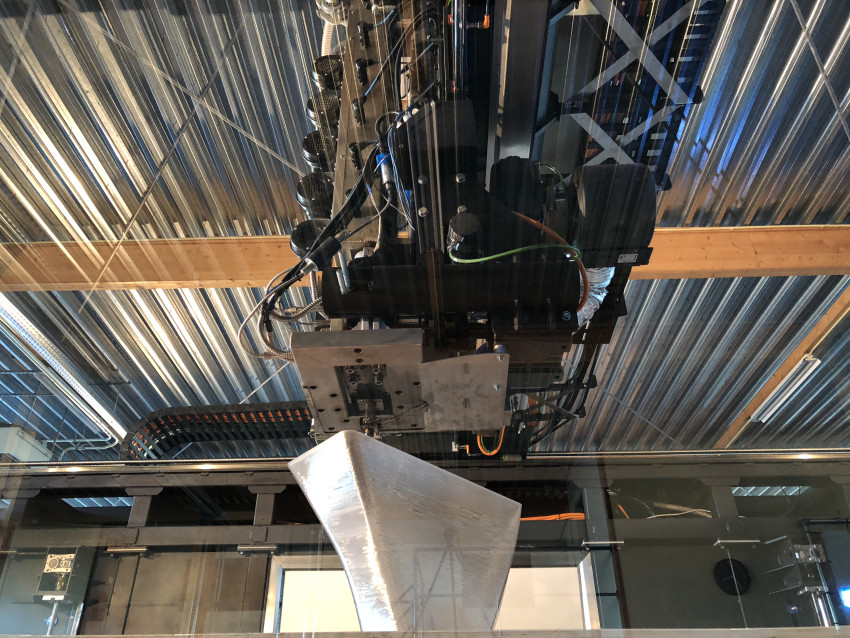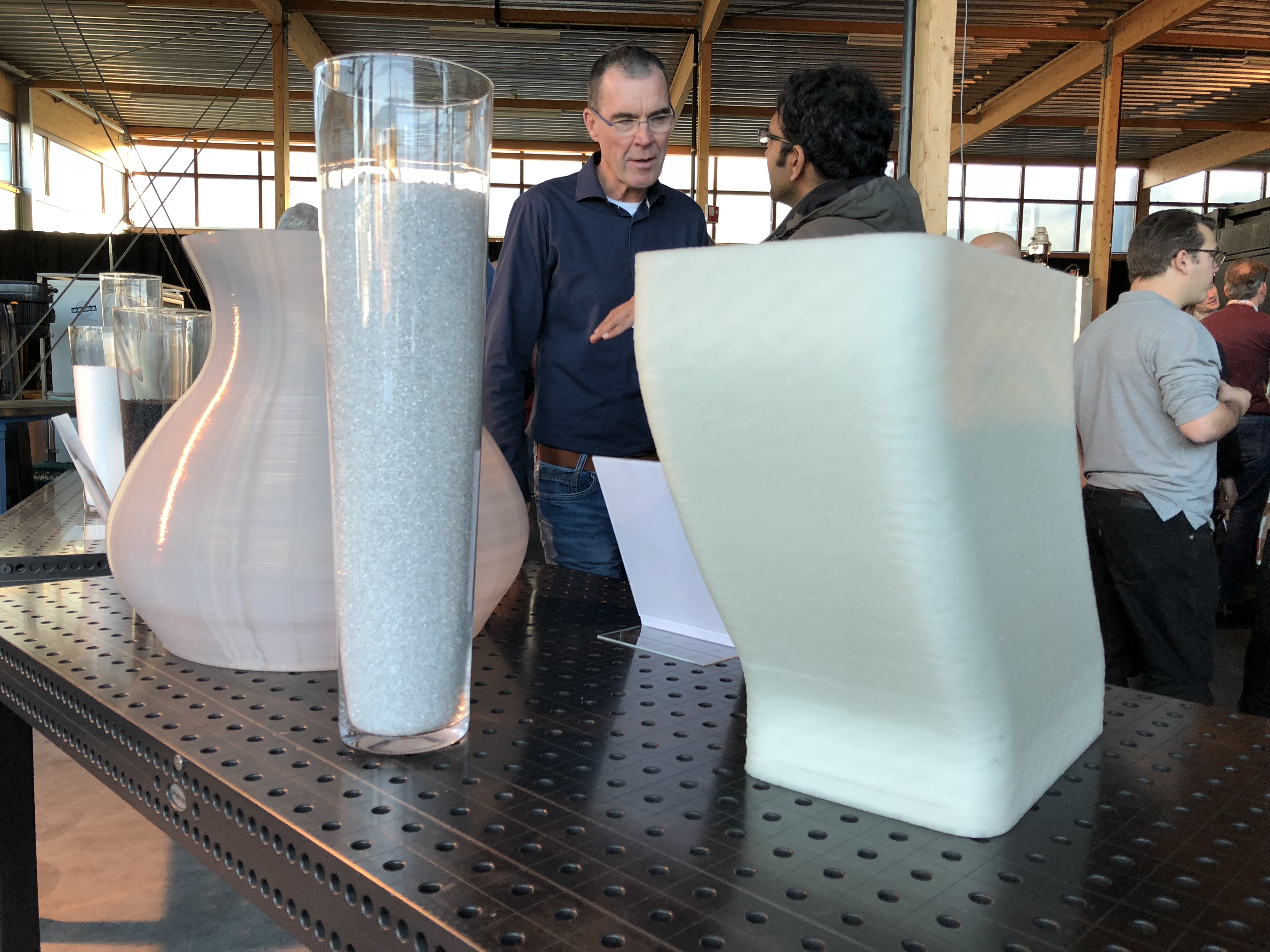
Europe's biggest 3D printer unveiled
The Dutch company CEAD has revealed its new 3D printer. It's a unique model that can quickly print large objects, with two materials at the same time.
With a print surface of 4x2x1.5m, it's the largest printer in Europe actually available on the market. The printing speed is impressive too (on average, 15 kg of material per hour). At the festive launch, a large cabin was presented – sanded and painted – that required some 50 hours to print. The printer itself was also present and operational, albeit at just 10% of its maximum capacity, or the noise would have been intrusive during the presentation.
FIBRES IN THE PRINT
But what makes this printer really special is the fact that it can print two materials simultaneously. It combines ‘ordinary’ 3D printing materials with long, continuous fibres of glass or carbon. This makes the prints produced much stronger. And that opens up potential areas of application where classic 3D printing still falls short: in heavy industries, such as shipping, construction and transport.
It wasn’t easy to construct the system in such a way that the fibres are properly embedded in the print. A reel feeds the fibre to a print head, which also applies the melted print plastic at the same time. ‘This required a great deal of trial and error before we got the system working really well,’ explains CEAD founder and CEO Maarten Logtenberg. But the result is self-evident: the fibre runs precisely through the middle of the plastic in every print round.

INVESTORS
CEAD began working on the printer last year. The company quickly found two investors who were interested: a producer of custom-made plastics and a maritime engineering consultancy. These two investors will also be the first to get a printer – the colossus installed at the launch was a prototype. ‘We'll be getting it mid-2019, I hope,’ says Jan Schrama of Poly Products.
Initially, the companies will be using their printer to create prototypes. That is a market for which ‘ordinary’ 3D printers are already used a lot. ‘But we have built it to also produce end products,’ explains Logtenberg. ‘The cabin that we printed can be used for a crane for example.’ Fulka Roos of Royal Roos says that he'll be using the printer to print a scale model of a ship for trials in the water tanks at the Maritime Research Institute Netherlands. ‘These models are usually made of wood, but that requires a lot of work and man-hours. It will be much easier with the printer.

REPLACING THE MOULD
Ultimately, the printer can be used to produce sections of ships, for example, that are currently made using moulds. In case of unique parts in particular, such moulds are basically too expensive. In such cases, the printer is faster and easier. And CEAD claims that the prints are just as strong and reliable.
Whether that is really the case remains to be seen when they are actually put to use.
HORIZON 2020
Logtenberg says that the printer will ultimately be produced for less than one million euros. In addition to investments from Royal Roos and Poly Products, CEAD received a subsidy from the European Commission as part of the Horizon 2020 project.
If you found this article interesting, subscribe for free to our weekly newsletter!






